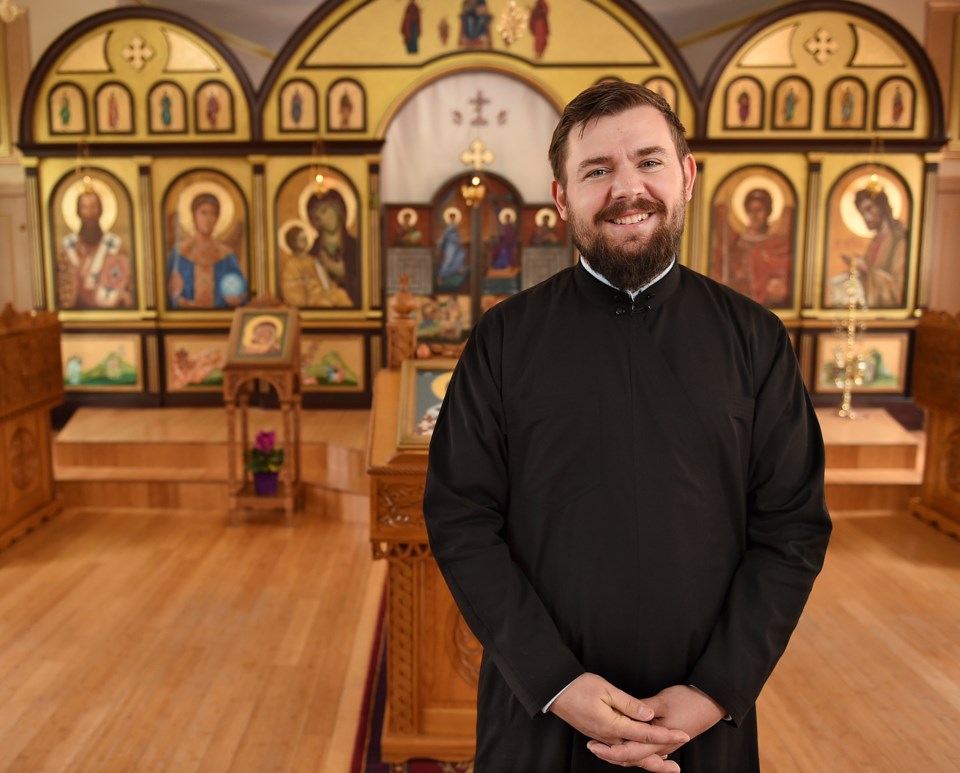Many congregations serving European ethnic communities have suffered in recent decades as second- and third-generation parishioners preferred English-language services (or none at all). But St. Sava Serbian Orthodox Church, just off Fraser Street in south Vancouver, is thriving.Ìý
Ìý
It may surprise many that British Columbiaâs Serbs are among the oldest ethnic communities in the province. The gold rush of the 1850s brought poverty-stricken Serbs from the Adriatic Coast to our coast. Another major influx came after the Second World War. Like many Europeans, Serbs were fleeing the ravaged continent and, as was the case for those in the eastern bloc, many were also fleeing communism.Ìý
Ìý
Most European churches have not had a large influx of new blood since that time, but the tragic events of the 1990s as Yugoslavia broke apart amid brutal wars eventually led to a new wave of Serbs coming to Vancouver.Ìý
Ìý
Father Marko Radmanovic was six years old at the height of the fighting. His hometown, Vukovar, saw fierce fighting between the Croatian majority and the Yugoslav Peopleâs Army, backed by Serbian paramilitary groups. The city is now part of Croatia but retains a significant Serb minority.
Ìý
Five years ago, Radmanovic and his wife Dragana came to Canada, where he was ordained. He is now one of two priests at St. Sava. There is no Serbian neighbourhood in Metro Vancouver, no âLittle Belgrade.â The population is spread across the region and so the priests have divided it geographically to provide pastoral care. But the century-old church is a cultural as well as a spiritual hub for the community. There are classes, lectures and folk dancing, as well as Serbian-language programs for kids. This year, for the first time, a Serbian summer camp will immerse the youngest generation in the language and culture of their families. Serbian Days, an annual festival on Labour Day weekend, takes place at the church and the adjacent park.
Ìý
Many Serbian families have brought a grandparent over to care for the kids, in which case they pass on the language. But for those without an older generation present, and where the kids may be in preschool, the mother tongue is harder to carry on, Radmanovic says.
Ìý
At church, the services are primarily in Serbian, with some English sprinkled in.Ìý
Ìý
Although called the Serbian Orthodox Church, Radmanovic emphasizes that it is part of the larger Holy Apostolic Church that includes the Greek, Russian, Bulgarian, Romanian, Ukrainian and other Orthodox churches. The schism that divided Eastern Orthodoxy from the Roman Catholics occurred around 1024. But another, far more recent, schism led to the formation of St. Savaâs church. During the time of Yugoslavian socialism, some North American Serbs viewed the Serbian patriarch in Belgrade as perhaps insufficiently independent of the regime.
Ìý
Some split from Vancouverâs original Serbian Orthodox Church and bought the 100-year-old building that now houses St. Savaâs from the United Church in 1970. The original church, St. Archangel Michael, later sold their land downtown and built a big new church in Burnaby.
With the end of Yugoslavia came the end of the schism and Radmanovic says his parish has good relations not only with the other Serbian church but with all the Eastern Orthodox parishes in town.
Ìý
St. Sava (1174-1236) was the son of the king of Serbia, a prince who renounced the royal life and became a monk. Under him, Serbia was first granted a national bishopric, with Sava as its first bishop. His relics have been carried by Serbs into war, raising the morale of fighters.
Ìý
The wars of the 1990s were national and sectarian, complex in ways that most North Americans still struggle to comprehend. If we have any understanding of the events of the time, Radmanovic acknowledges, it is probably the idea that the Serbs were the âbad guys.â
Ìý
The church does not promote war, he says and the perception from that time is one that he hopes his parish â the furthest outpost of the Serbian church â has an opportunity to help dispel. Everyone is welcome to come to the church, he says, the door is always open.
Ìý
âThey can see that we are not barbarians or something like that, because that was the picture of the Serbians during the 1990s, that Serbians were the most guilty for the war,â he says. âBut when we show them that we have rich culture, we have rich traditions, they can know us better than before.â
Ìý
Ìý
@Pat604Johnson



